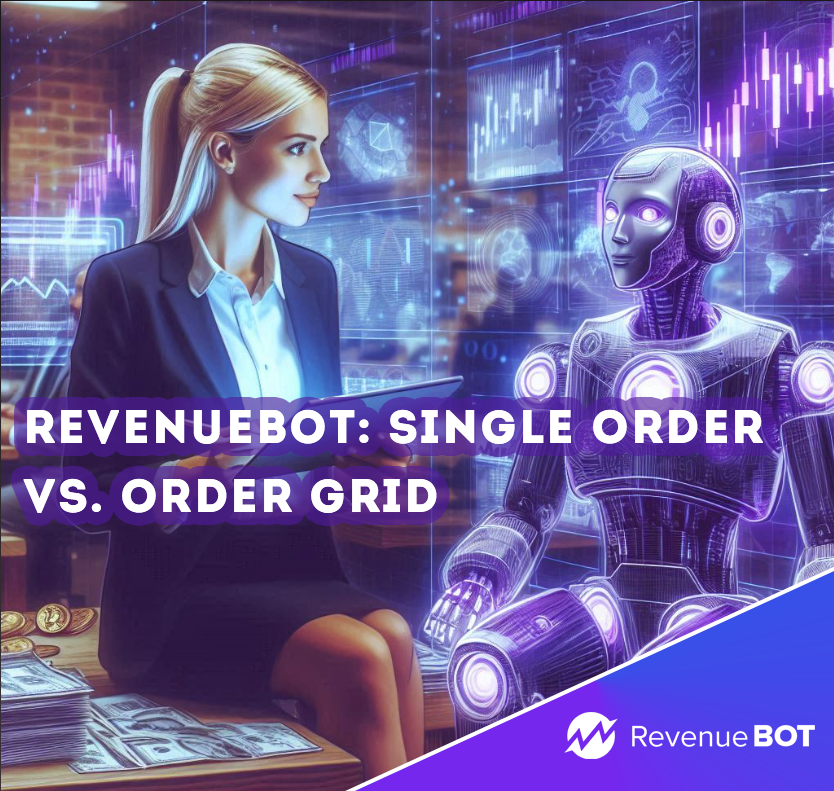
Workflow automation is on the rise in the crypto space. Among the tools actively used by traders of all kinds is RevenueBot, a platform empowering you to build your own trading bots for automated trading. Our users are free to choose between two main strategies: using an order grid or creating a bot to trade with a single order. Let’s look at the pros and cons of each of these strategies.
Grid trading strategy
The grid strategy involves placing several buy and sell orders within a given price range. When setting up the bot, you should specify the percentage of price overlap, thus determining by what proportion the entire order grid will be placed.
Pros:
- Price averaging feature. Should you fail to enter a trade, your bot would then place additional orders to average out the buy or sell price. This means whenever the next coin price reversal occurs, the bot will be able to execute the Take Profit order faster, minimizing losses and boosting the chance of generating higher profits.
- Versatility. Order grids enable our bots to adjust to any market shifts, providing far more consistent trading even in the most volatile conditions.
Cons:
- Underexpenditure. Only a part of the funds is used in trading, as some of them are reserved for placing additional orders. This can cause some of the deposit to stay idle.
- Limited profits in case of price rising. While using the Long algo, only one order is executed whenever the coin surges in value. For this reason, the total profit against the entire balance on your bot’s wallet may be low.
Single order strategy
This very strategy suggests that you use your entire deposit at once to execute a single order. It also requires more fine-tuning and market analysis.
Pros:
- Making the most of your funds. All of your deposit is used while trading, potentially resulting in a higher profit on a successful trade.
- Easy to set up. Trading with a single order takes less customization, simplifying the launch of the bot.
Cons:
- Need for robust filters. In order to trade with a single order successfully, you’d better set up some decent filters to access the market at the moment of price reversal. This implies a thorough analysis of the crypto market and knowledge of its distinctive features.
- Liquidation risk. When trading futures in a single order, you have to monitor your moneymanagement carefully as there is a risk of liquidation. It is recommended to set a Stop Loss order to crackdown on potential losses.
Conclusion
At RevenueBot, each of the strategies available boast their own unique advantages and disadvantages. The option between using an order grid or trading with a single order is up to trader, their experience and willingness to accept risk. A grid strategy is suitable for more stable trading with less risk, while a single order strategy can prove to be more profitable with proper market analysis, but requires more intense monitoring and risk management.
Any questions? Ask us at Support Portal or check out our Knowledge Base.
Join crypto trading with us!
